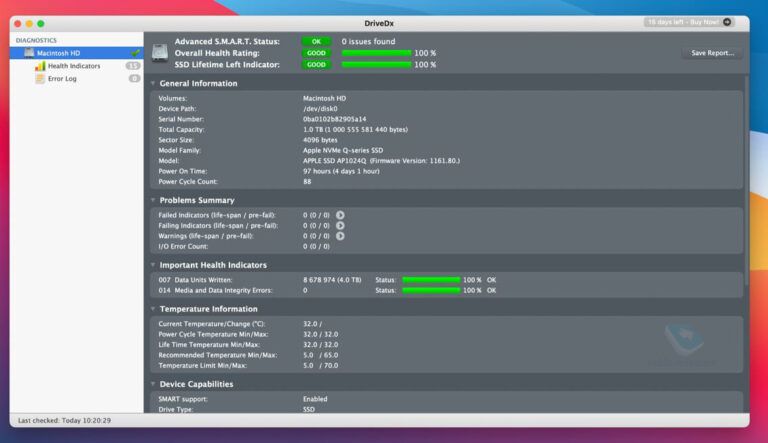


#Drivedx m1 mac free#
Because of how free storage is distributed, whenever an SSD writes data, it may be able to write just a page’s worth, or it might be required to write an entire block-so a single bit of data changed could mean writing as much as 4MB. Depending on the SSD’s chips’ design, a page might hold 2K to 16K and a block may be between 256K and 4MB. The SSD firmware tracks all this-it’s seamless to the operating system and you.Ĭomplicating this is that SSDs group memory cells into larger units known as pages, and pages are grouped into blocks. Every time you save a document, copy files, or otherwise cause data to be written to an SSD, or whenever the operating system takes an automated action of the same sort, the cells that the SSD writes to are entirely different than where the previous data was stored. Otherwise, a frequently used cell would burn out far in advance of other cells. SSD firmware works to rotate through memory cells, units that store 1 to 4 bits each, and level the wear across the entire drive. It has some Apple-related limitations on monitoring external drives.)

(You can use a utility like DriveDx to provide an ongoing estimate of the remaining lifetime on an SSD or HDD. On an HDD, because data writes involve magnetic changes, the same level of wear doesn’t occur for updating files at an identical location on a disk. SSDs have an estimated finite number of times each cell can be written along with an overall anticipated total writes to the drive over its lifetime. More specifically, reading data from an SSD memory cell uses very low voltage and incurs no real wear writing data requires higher voltages that eventually wear out the storage bits. An HDD has lots of internal moving and spinning parts while an SSD is “solid state” and everything occurs as the result of an electrical operation within the drive’s chips.


 0 kommentar(er)
0 kommentar(er)
